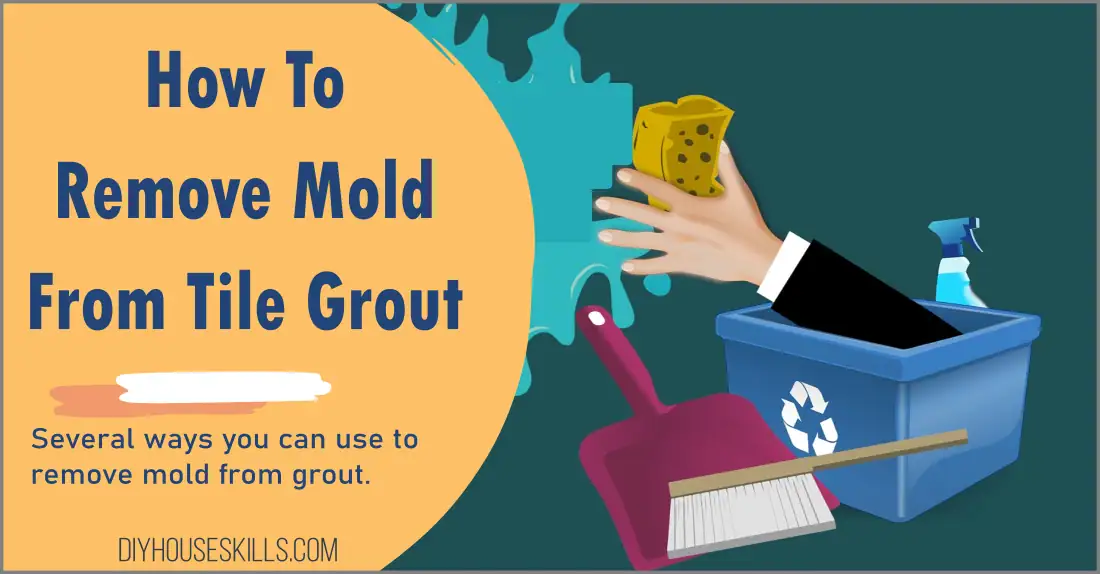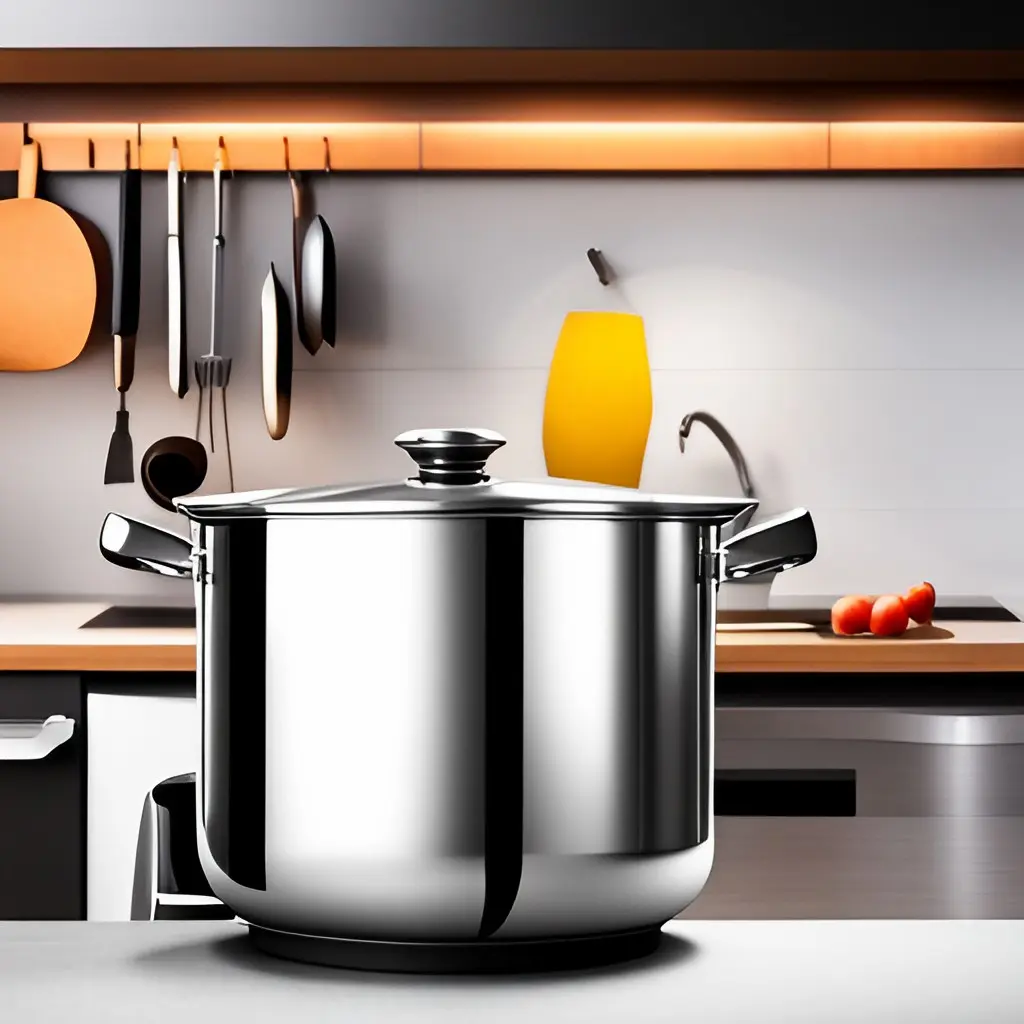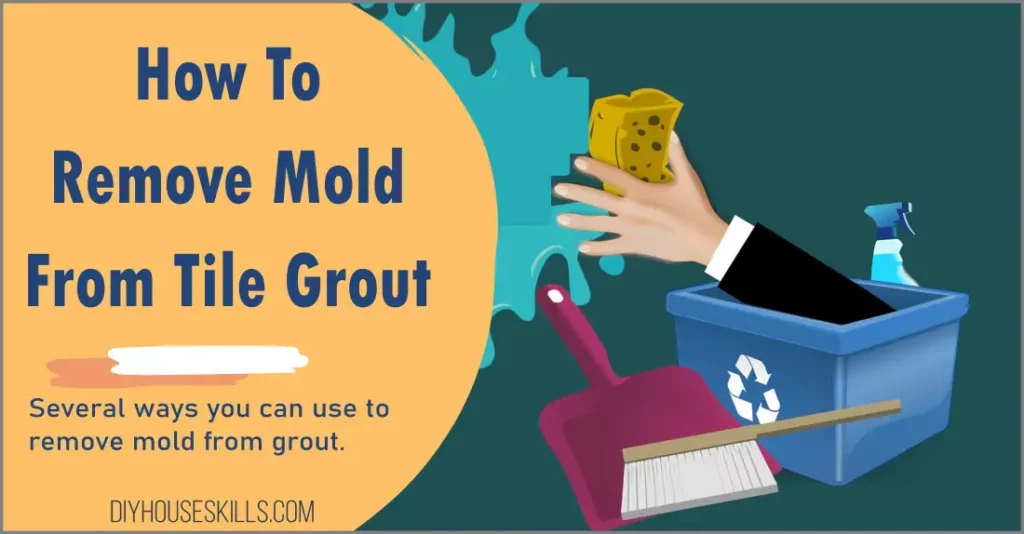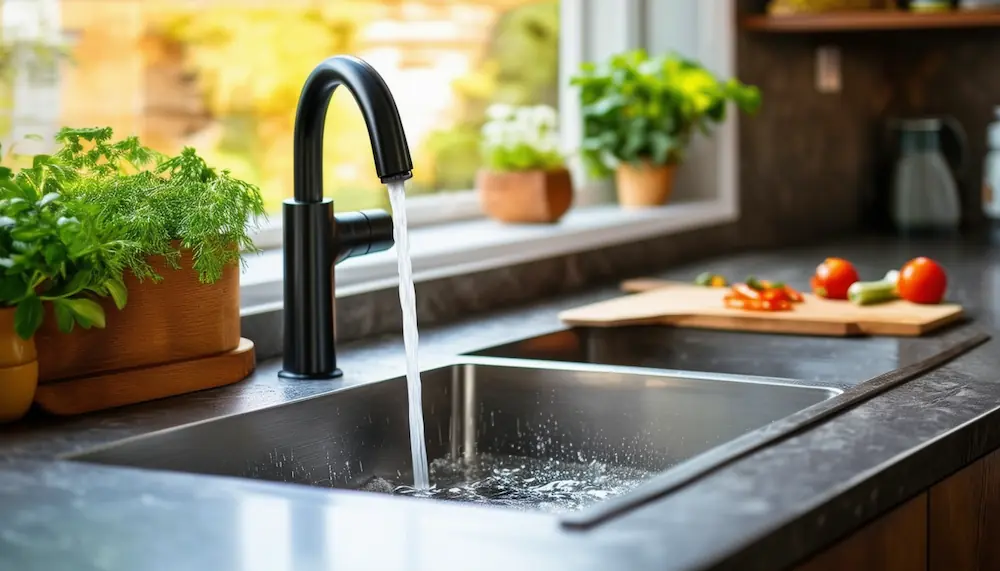Immediate Answer
To effectively remove mold from tile grout, you need to follow a systematic approach that ensures both the mold is eradicated and future growth is prevented.
The process involves using appropriate cleaning agents such as baking soda, borax, hydrogen peroxide, or specialized mold remover solutions, along with scrubbing the affected areas and taking preventative measures to maintain a dry and well-ventilated environment.
Follow-Up Questions
- What materials do I need to remove mold from tile grout?
- How can I ensure my safety during the mold removal process?
- What are the step-by-step instructions for removing mold from tile grout?
- How can I prevent mold from returning?
- What common mistakes should I avoid when removing mold from tile grout?
- Are there natural ingredients I can use to remove mold?
- Should I consider hiring a professional for this task?
THIS POST MAY CONTAIN AFFILIATE LINKS. As an Amazon Associate, I earn from qualifying purchases. PLEASE READ MY DISCLOSURE FOR MORE INFO.
What To Know About Mold
- Mold can be harmful to your health.
- Mold needs moisture to grow.
- Wear a mask, gloves, and potentially goggles when cleaning the mold.
Mold in tile grout is more than just an aesthetic concern; it poses significant health risks, particularly for those with allergies or respiratory conditions. Mold thrives in damp environments, making bathrooms and kitchens prime targets. Addressing mold issues promptly is crucial to maintaining a healthy living space.
Preparation: Gathering Necessary Materials
Before you begin, ensure you have all the required materials:
- Scrub brush
- Spray bottle
- Mold remover solution (or natural alternatives like baking soda, borax, hydrogen peroxide, or vinegar)
- Gloves
- Mask
- Protective eyewear
Safety First: Protective Measures
Mold spores can be harmful when inhaled or come into contact with skin. Always wear:
- Gloves: To protect your hands from mold and cleaning agents.
- Mask: To avoid inhaling mold spores.
- Protective Eyewear: To shield your eyes from splashes.
How to Remove Mold From Tile Grout
Removing mold from tile grout can be straightforward with the right approach. Here are effective methods to help you get rid of mold:
1. Warm Water and a Scrub Brush
This is the simplest and safest method, avoiding harsh chemicals. Here’s how to do it:
Materials Needed:
- Spray bottle or bucket
- Warm water
- Scrub brush
Steps:
- Prepare Warm Water: Fill a spray bottle or a bucket with warm water.
- Apply Warm Water: Spray the moldy tile grout with the warm water, ensuring it is thoroughly wet.
- Wait: Let the water sit for a few minutes to loosen the mold.
- Scrub: Vigorously scrub the moldy grout with a scrub brush in a back-and-forth motion.
- Rinse: Rinse the area with clean water to wash away the mold residues.
- Repeat: Repeat steps 2-5 if necessary for stubborn mold patches.
FAQs:
- Why use warm water? Warm water helps to loosen the mold, making it easier to scrub away.
- Can I use any scrub brush? A stiff-bristled scrub brush works best for removing mold.
- What if the mold doesn’t come off completely? Repeat the process or consider using a stronger cleaning method if mold persists.

2. Baking Soda
Baking soda is an effective and natural cleaning agent for removing mold from tile grout. Here’s how to use it:
Materials Needed:
- Baking soda
- Water
- Spray bottle
- Scrub brush
- Clean cloths
Steps:
- Prepare the Baking Soda Paste: In a small bowl, combine baking soda and water to form a thick paste, ensuring it’s not too runny.
- Apply the Paste: Use a spoon or spatula to apply the baking soda paste directly onto the mold-affected grout lines.
- Wait: Allow the paste to sit for 5-10 minutes. This will help to loosen the mold.
- Scrub: Using a stiff-bristled scrub brush, scrub the grout lines vigorously, focusing on areas with visible mold.
- Rinse: Spray the scrubbed areas with clean water from the spray bottle to rinse away the baking soda and mold residues.
- Wipe Dry: Use clean cloths to dry the grout completely, preventing any remaining moisture that could encourage mold regrowth.
- Repeat: Repeat steps 2-6 if any mold remains visible.
FAQs:
- Why use baking soda? Baking soda is a mild abrasive and a natural cleaning agent that is safe for both you and the environment.
- Can I use any scrub brush? A stiff-bristled scrub brush works best to effectively remove mold from grout lines.
- What if the mold doesn’t come off completely? Repeat the process or consider combining baking soda with vinegar for more effective results. Always test a small area first.
According to the EPA, to effectively clean up mold, you must clean up the mold and eliminate sources of moisture.
3. Borax
Just like baking soda, borax is also an effective cleaning agent that can be used to remove mold from tile grout.
The process of using borax to remove mold is similar to using baking soda. Just make a paste of borax and water, and apply it to the affected areas. Let it sit for a few minutes before scrubbing the area clean. Rinse well with clean water and dry completely when you’re done.
4. Hydrogen Peroxide
Hydrogen peroxide is a natural disinfectant that can be used to kill mold.
To use hydrogen peroxide to remove mold, just pour it onto the affected area and let it sit for a few minutes. Scrub the area clean, and then rinse with clean water.
If you’re in the mood for some DIY, you can also make a mold-killing spray by mixing 1 part hydrogen peroxide with 2 parts water. Pour it into a spray bottle and use it as needed.
5. Vinegar
Vinegar makes a very good cleaning agent. You need to note that vinegar may not be the best cleaning agent though. It takes a little more time and effort to work.
To remove mold from tile grout using vinegar, just pour it onto the affected areas and let it sit for an hour. Scrub the area clean, and then rinse with clean water. You may need to repeat this process a few times before the mold is completely gone.
6. Bleach
Bleach is a very effective cleaning agent. However, it can also be very harsh. You need to use bleach with caution. Also note, bleach is not the recommended way to remove mold since it is caustic and odors can be dangerous to inhale.
Here are s few tips to follow when using bleach to remove mold from tile grout:
- Wear gloves and protective clothing.
- Open the windows for ventilation.
- Mix 1 part bleach with 10 parts water.
- Pour the solution onto the moldy areas.
- Let it sit for about 15 minutes.
- Scrub the area clean with a brush.
- Rinse the area with clean water.
- Dry the area completely.
Repeat this process if necessary.
7. Steam Cleaner
If you have a steam cleaner, you can use it to remove mold from tile grout. The high temperature of the steam will kill the mold and make it easier to scrub away.
Follow these steps when using a steam cleaner to remove mold from tile grout:
- Fill the steamer with water.
- Heat the water until it boils.
- Hold the steamer about an inch away from the moldy tile grout and let the steam do its work for a few minutes.
- Scrub the area with a brush.
- Rinse the area with clean water.
- Dry the area completely.
A highly-rated steam cleaner from Amazon is the Pressurized Handheld Multi-Surface Natural Steam Cleaner with 12 pcs Accessories. It is a chemical-free way to clean.
If you don’t have a steam cleaner, you can rent one from a hardware store or a home improvement store.
Tile and Grout Cleaning Service
If you don’t want to deal with the hassle of removing mold from tile grout yourself, you can always hire a professional tile and grout cleaning service.
A professional tile and grout cleaning service will have the necessary equipment and expertise to clean your tile grout properly. They will also be able to seal the grout to prevent mold from coming back.
How To Prevent Mold in the Future
Here are a few tips to help you prevent mold from coming back:
Clean Up Spills
You need to clean up spills as soon as they happen. Mold thrives in damp and moist conditions.
If you let a spill sit, it will become the perfect breeding ground for mold. So, always remember to clean up spills right away.
Keep Things Dry
It’s important to keep things dry. After taking a shower, make sure to dry the tub and shower area completely.
If there is any moisture, wipe it up with a towel. You should also open the windows and doors to let the area air out.
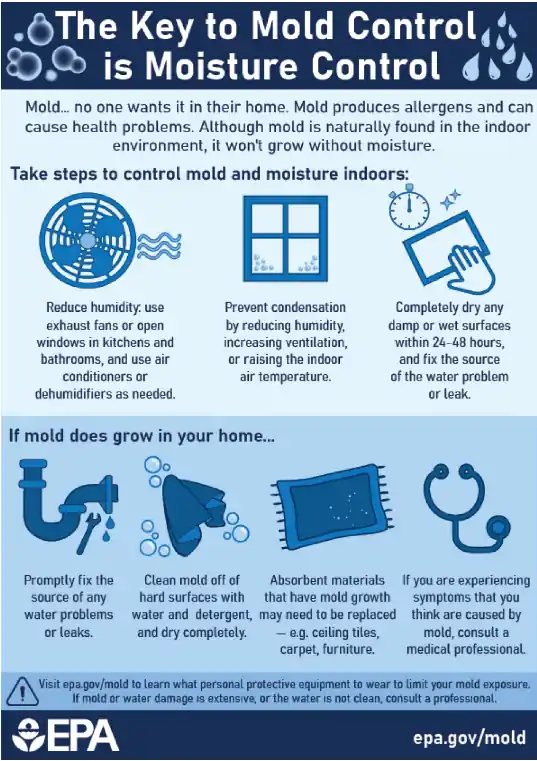
Use an Air Purifier
An air purifier can help to remove mold spores from the air. This will help to prevent mold from growing in the first place.
You can learn more about air purifiers in my article on the differences in filtration, noise levels, and effectiveness of air purifiers in my buying guide. These tips will help you purchase the right purifier for you.
Change Your Air Filters
You should change your air filters regularly. This will help to remove mold spores and other airborne particles from your home.
Wondering if you can paint your grout to make it look better? Yes, you can. See how to paint grout and just how quick and easy it is to restore its appearance in my article.
Common Mistakes to Avoid
- Not Wearing Protective Gear
- Exposure to mold spores can be harmful. Always use gloves, a mask, and protective eyewear.
- Using Bleach Alone
- While bleach can whiten mold, it doesn’t always kill it completely. Opt for mold-specific cleaners or natural alternatives.
- Applying Too Much Force
- Scrubbing too hard can damage grout and tiles. Use moderate pressure for effective cleaning.
- Not Allowing Enough Time
- Let the cleaning solution sit for the recommended time to ensure it fully penetrates and breaks down the mold.
- Ignoring Moisture Issues
- Address underlying moisture problems to prevent mold from recurring. Fix leaks and improve ventilation.
Conclusion
Mold can be a tough thing to deal with. But, with the right knowledge and tools, you can remove mold from tile grout easily. I hope this article has been helpful.
What’s the takeaway?
- Choose a mold-cleaning solution from the choices in this article. Simple water and baking soda or vinegar solution are very effective.
- Take precautions when cleaning up mold from grout, such as wearing gloves and a mask.
- Mold needs moisture to grow, so keep things dry to prevent it from coming back.
If you have any questions or comments, please feel free to leave them below.

I’m J.S., I created and am the content manager at DIYHouseSkills.com. I do the research and write the articles that appear on this website. I’ve learned many household skills during my life and think it’s important to at least know the basics so that you can save yourself time and money… READ FULL BIO >
- DIY Secrets: Finding and Using the Bosch Ice Maker Reset ButtonHow do I find and use the Bosch ice maker reset button? The Bosch ice maker reset button is typically located at the front or side of the ice maker unit. To reset your Bosch ice maker, press and hold the reset button for about 10 seconds until you hear a beep. This action will… Read more: DIY Secrets: Finding and Using the Bosch Ice Maker Reset Button
- Say Goodbye to Stubborn Stains on Stainless Steel PotsImmediate Answer Effectively cleaning stainless steel pots involves a few straightforward steps. First, rinse the pot with warm water to remove any loose debris. Next, scrub with soapy water using a non-abrasive sponge. For tough stains, use a paste of baking soda and water or apply vinegar directly. Rinse thoroughly and dry completely to prevent… Read more: Say Goodbye to Stubborn Stains on Stainless Steel Pots
- Effortlessly Remove Mold From Tile Grout with These Easy StepsImmediate Answer To effectively remove mold from tile grout, you need to follow a systematic approach that ensures both the mold is eradicated and future growth is prevented. The process involves using appropriate cleaning agents such as baking soda, borax, hydrogen peroxide, or specialized mold remover solutions, along with scrubbing the affected areas and taking… Read more: Effortlessly Remove Mold From Tile Grout with These Easy Steps
- Proven Strategies to Unclog Your Kitchen Sink EfficientlyUnblocking a kitchen sink can seem like a daunting task, but with the right tools and techniques, you can quickly restore your sink’s functionality without the need for professional help. This guide will walk you through a step-by-step process to unclog your kitchen sink using simple, effective methods. Quick Overview Here’s a quick, effective method… Read more: Proven Strategies to Unclog Your Kitchen Sink Efficiently
- Outlet Not Working, Breaker Not Tripped | AdviceWhat To Do When Your Outlet Is Not Working But The Breaker Isn’t Tripped Experiencing an outlet that’s not delivering power can be perplexing, especially when the circuit breaker hasn’t been tripped. This common issue can often be resolved without needing to call an electrician. Here’s a quick rundown to help pinpoint and possibly fix… Read more: Outlet Not Working, Breaker Not Tripped | Advice
